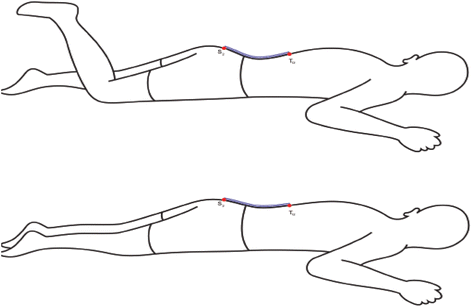Change in lumbar lordosis during prone lying knee flexion test in subjects with and without low back pain
- PMID: 26034580
- PMCID: PMC4450612
- DOI: 10.1186/s12998-015-0061-z
Change in lumbar lordosis during prone lying knee flexion test in subjects with and without low back pain
Abstract
Background: Prone lying knee flexion (PLKF) is one of the clinical tests used for assessment of the lumbo-pelvic movement pattern. Considerable increase in lumbar lordosis during this test has been considered as impairment of movement patterns in lumbar-pelvic region. However, no study has directly evaluated the change in lordosis during active PLKF test in subjects with low back pain (LBP). The purpose of this study was to investigate the change of lumbar lordosis in PLKF test in subjects with and without LBP.
Methods: A convenience sample of 80 subjects participated in the study. Subjects were categorized into two groups: those with chronic non-specific LBP (N = 40, mean age: 40.84 ± 17.59) and with no history of LBP (N = 40, mean age: 23.57 ± 10.61). Lumbar lordosis was measured with flexible ruler, first in prone position and then on active PKF test in both subjects with and without LBP. Data was analyzed by using statistical methods such as, independent t-test and paired t-test.
Results: There were statistically significant differences in lumbar lordosis between prone position and after active PLKF in both subjects with and without LBP (P < 0.0001). The amount of change in lordosis during PLKF test was not significant between the two groups (P = 0.65). However these changes were greater among patients with LBP.
Conclusion: Increase in lumbar lordosis during this test may be due to excessive flexibility of movement of the lumbar spine in the direction of extension and abnormal movement patterns in the individuals with LBP.
Keywords: Flexible ruler; Low back pain; Lumbar lordosis; Movement pattern; Prone knee flexion.
Figures
References
-
- Sahrmann S. Diagnosis and treatment of movement impairment syndromes. 1. Missouri: Mosby. Inc; 2002. pp. 121–92.
LinkOut - more resources
Full Text Sources
Other Literature Sources
Miscellaneous



